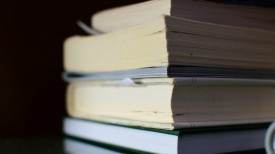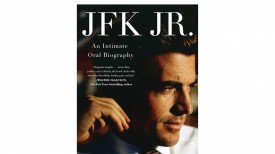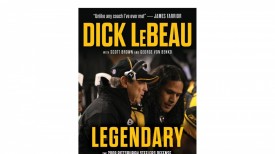One of the Oldest Known Books Up for Auction in London, Estimated Value Up to $3.8M
The Crosby-Schøyen Codex, a historical piece, is poised to draw significant attention when it hits the auction block this year. The Crosby-Schøyen Codex, inscribed in Coptic on papyrus in Egypt, is one of the earliest Christian liturgical books.
Christie, a renowned international auction house, is set to auction the piece on June 11. Its potential value ranges from $2.6 million to $3.8 million.
A Testament to Early Christian Heritage
Crafted for four decades by a single scribe in an Egyptian monastery, the codex comprises 52 leaves, equivalent to 104 pages. Through carbon dating, scholars have determined its origins between the middle of the 3rd and 4th centuries.
According to Fox News, the Crosby-Schøyen Codex comprises five significant texts, including excerpts from the Bible such as Jonah, 2 Maccabees 5:27 - 7:41, and 1 Peter. Additionally, it contains Melito of Sardis' work "Peri Pascha," spanning from section 47 to 105, shedding light on early Christian perspectives. Lastly, the codex features an unidentified homily, likely delivered on an Easter morning.
Preserved meticulously behind plexiglass and housed within two secure wooden boxes, the codex stands as a testament to the early spread of Christianity. Its journey through time has been remarkable. It is among the Bodmer Papyri, found in the 1950s, and stayed at the University of Mississippi until 1981.
It has changed hands several times before landing in the possession of Norwegian manuscript collector Martin Schøyen in 1988. Thus, it holds the distinction of being the oldest known book in private ownership.
Historical and Cultural Importance of the Codex
Eugenio Donadoni, a senior specialist at Christie, underscored the profound significance of the Crosby-Schøyen Codex. The Codex stands as one of the earliest witnesses to a crucial stage in cultural and textual evolution, an importance rivaling that of Gutenberg's printing press and the 20th-century advancements in electronic publishing and communication. It represents an early example of the book format as we recognize it today.
As the oldest book in private possession, its appearance at auction is unlikely to recur. Furthermore, it holds monumental value as a testament to the early dissemination of Christianity in the Mediterranean region.
READ ALSO: HarperCollins's Book Design Change Yields Major Environmental Impact
Early monks in upper Egypt utilized this very codex for Easter celebrations, a mere few centuries after the time of Christ and shortly following the authoring of the last Gospel. Notably, it contains the earliest complete texts of two Bible books, 1 Peter and Jonah, integral to these early Easter services. Donadoni told Reuters that the codex was crafted when scrolls transformed into books. This marks the earliest form of books known today.
Remarkably, the codex has weathered the passage of time remarkably well due to the favorable climatic conditions of its place of discovery in Egypt.
According to information provided in Christie's catalog, the Crosby-Schøyen Codex is included within the prestigious Schøyen Collection, celebrated for its extensive and diverse array of manuscript treasures that traverse numerous eras of human history. Beyond its financial worth, the profound importance of this ancient manuscript lies in its capacity to connect us directly to our shared heritage and offer insights into the early roots of Christianity.
The codex is currently displayed at Christie's New York and will be available for viewing until April 9.
RELATED ARTICLE: NSW State Library Unveils Shakespeare's First Folio: 400-Year-Old Book Emerges from the Vault
© 2023 Books & Review All rights reserved.
Popular Now
1
Books to Read After 'Fourth Wing': Top Picks for Fantasy and Romantasy Fans

2
‘The Secret Public’ by Jon Savage Book Review: An Insightful Look Into the LGBTQ Influence

3
Stephanie Regalado's 'If They Only Knew' Column Is Now A Book, Unleashing 60 Anonymous True Stories to Empower Women

4
'No Wire Hangers' Scene That Almost Did Not Happen: New Book Reveals Faye Dunaway's Struggles

5
Rare First Edition of Aphra Behn's Novel 'Oroonoko' Discovered in Kent: A Historic Literary Find

Latest Stories
Book Reviews
‘The Secret Public’ by Jon Savage Book Review: An Insightful Look Into the LGBTQ Influence

Book News
Stephanie Regalado's 'If They Only Knew' Column Is Now A Book, Unleashing 60 Anonymous True Stories to Empower Women

Book News
'No Wire Hangers' Scene That Almost Did Not Happen: New Book Reveals Faye Dunaway's Struggles

Book Reviews
‘The Perfect Couple’ by Elin Hilderbrand Book Review: A Captivating Summer Mystery

Book News
New Book ‘The Franchise’ Reveals Penguins President Kyle Dubas’ ‘Biggest Mistake’ as Maple Leafs GM











